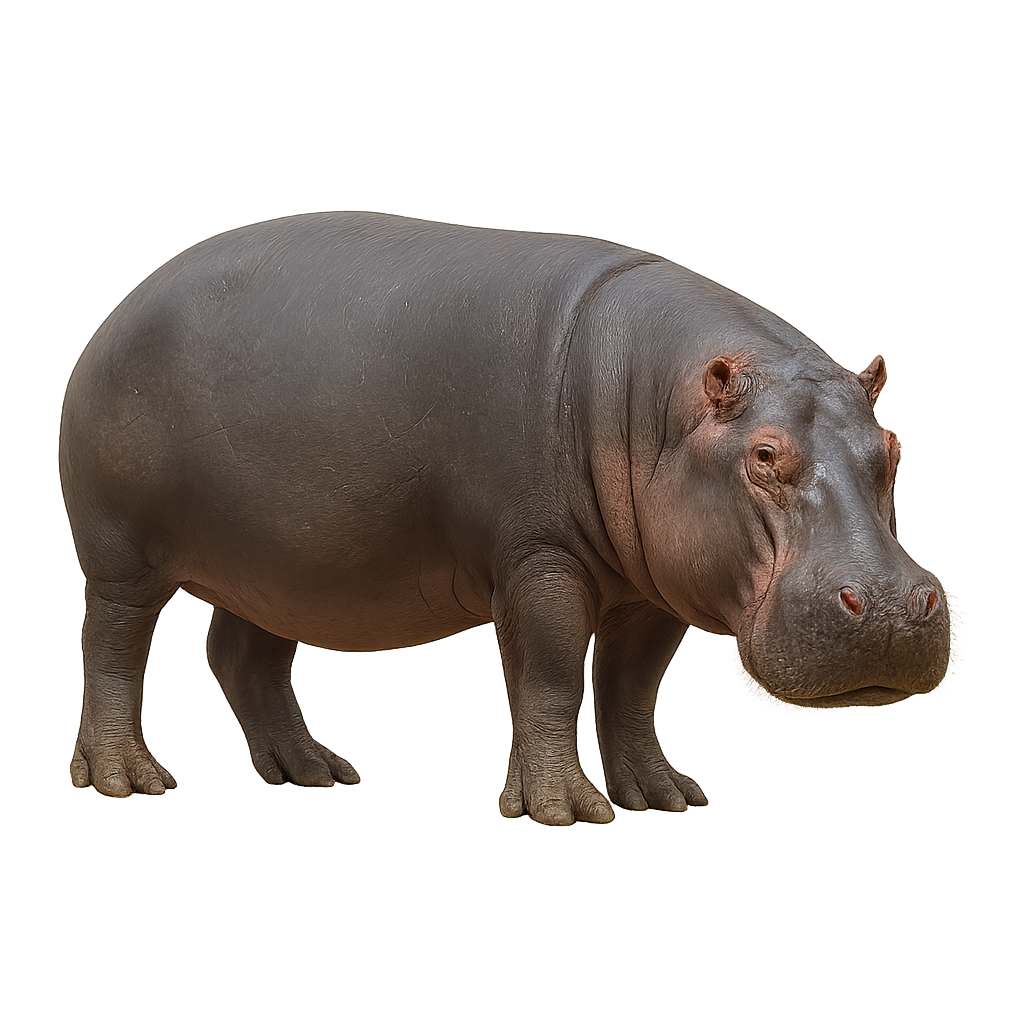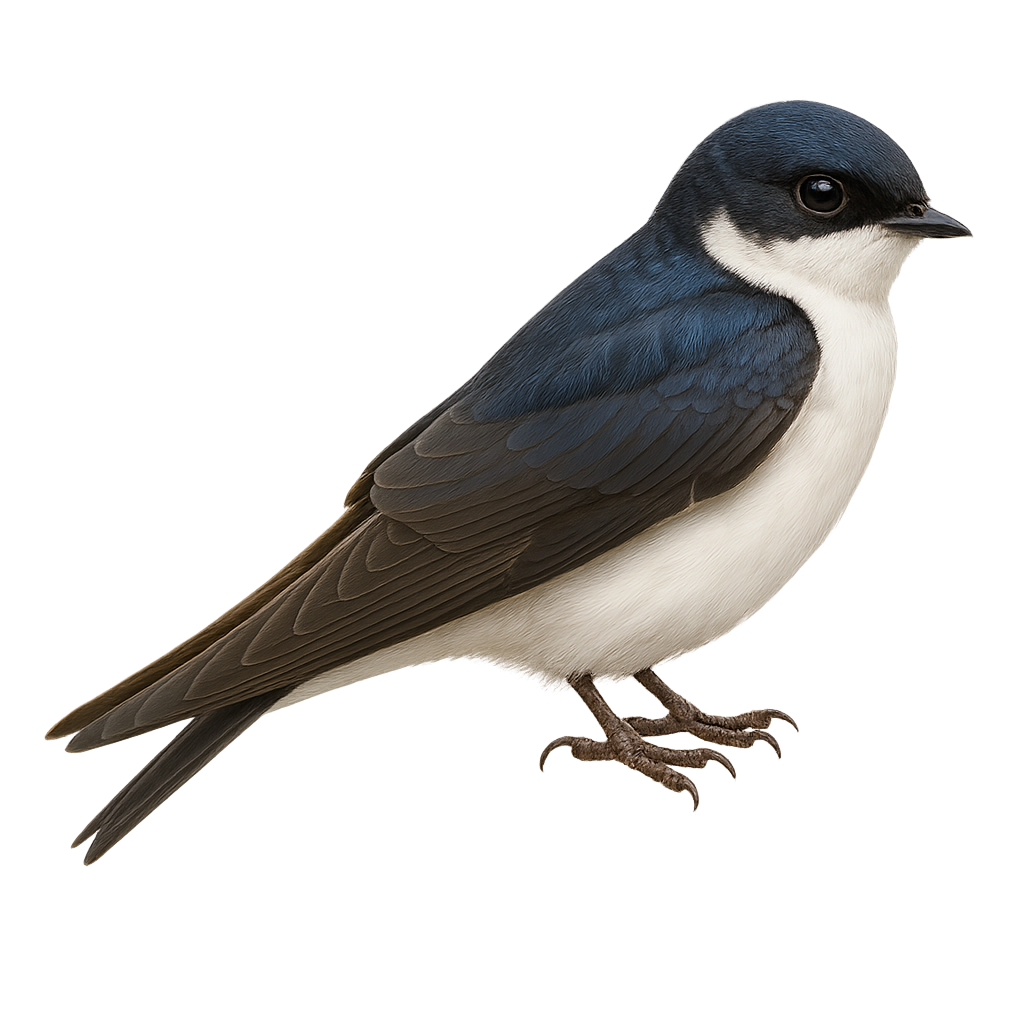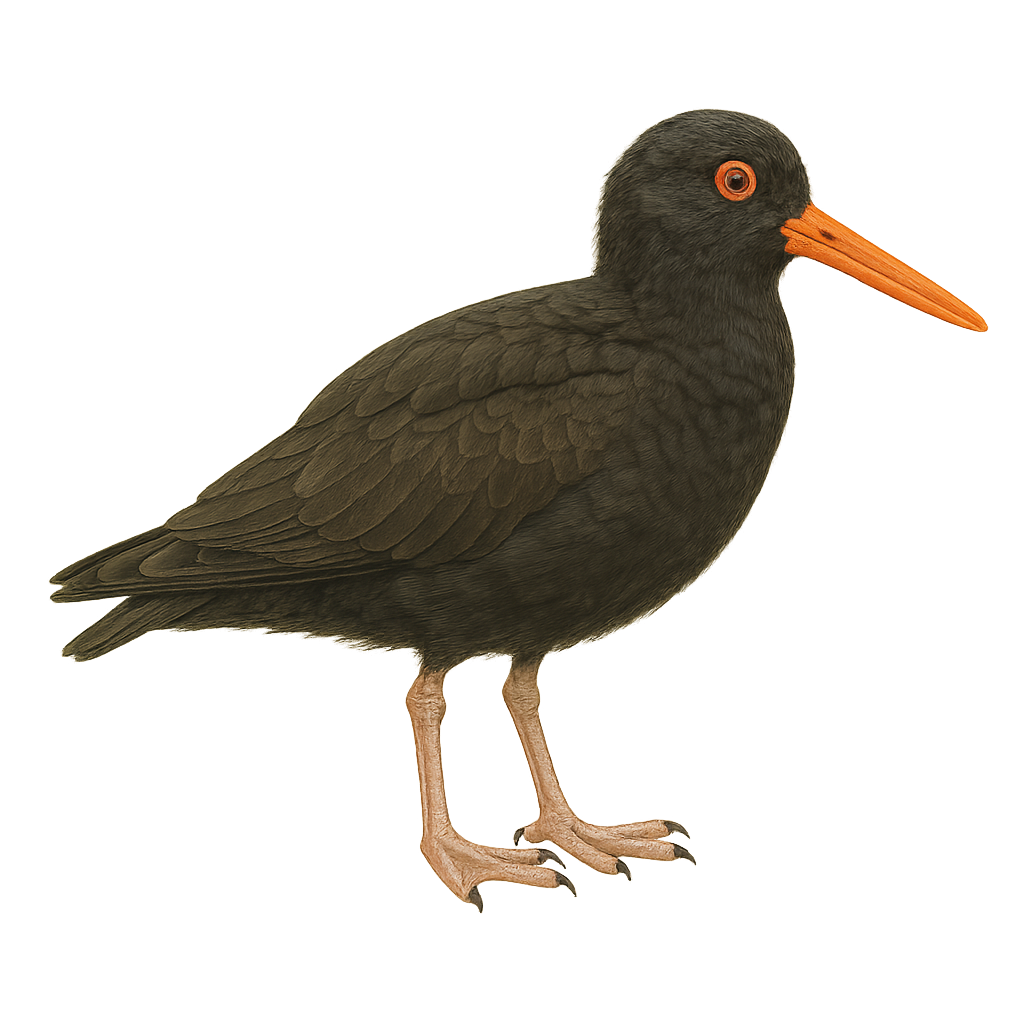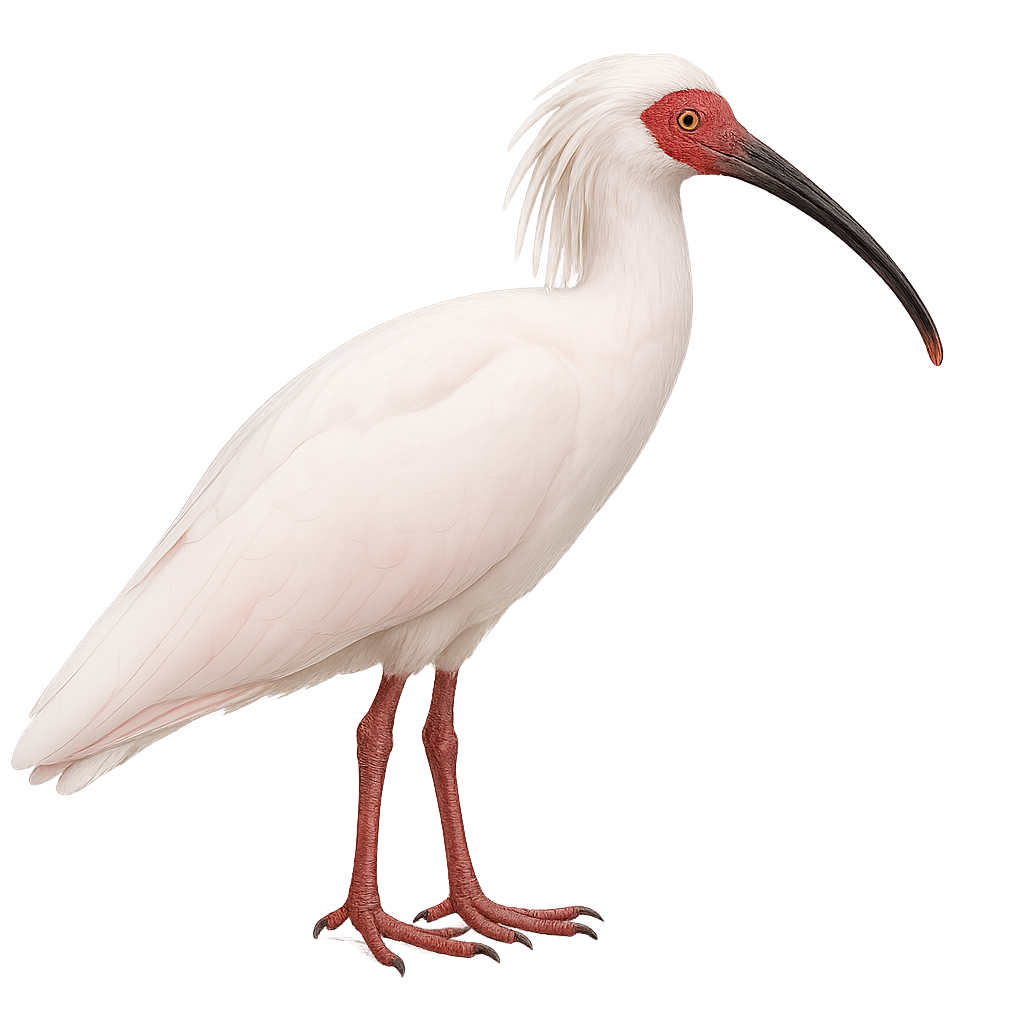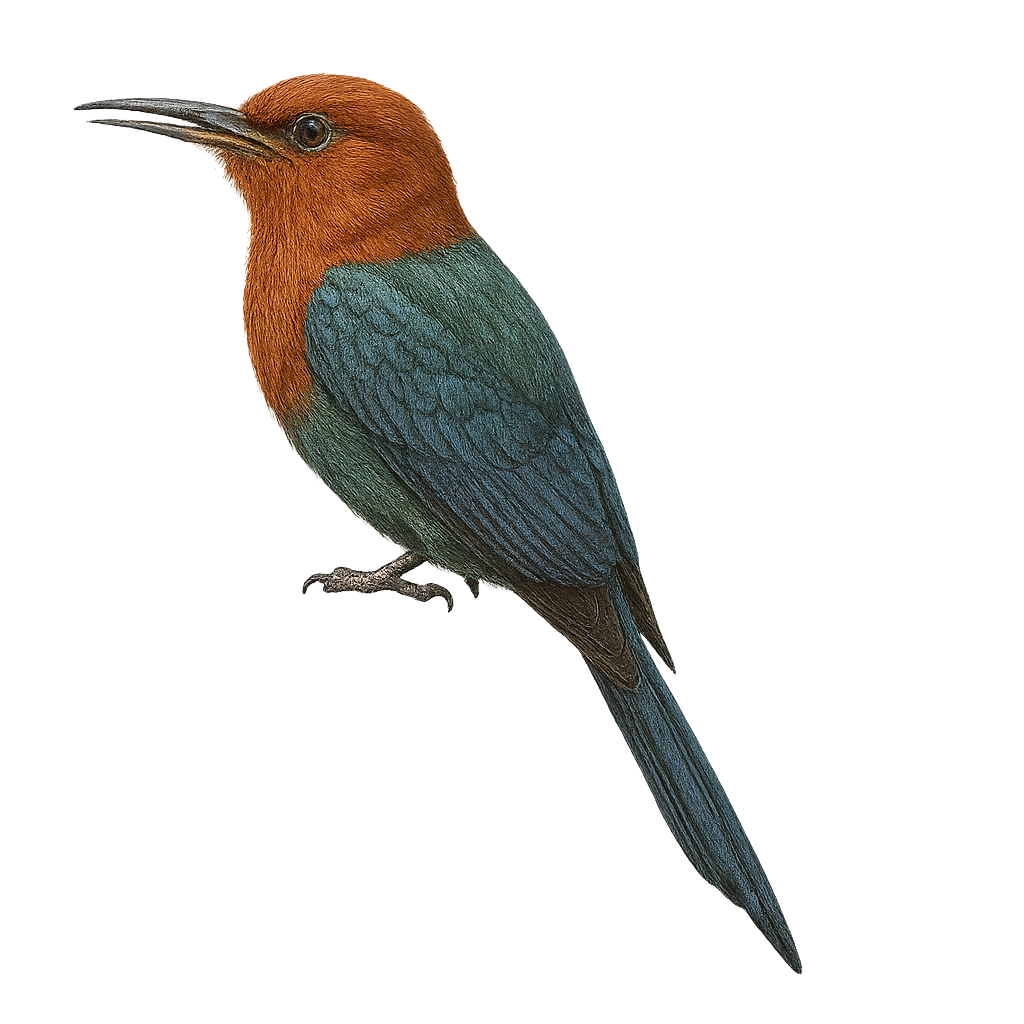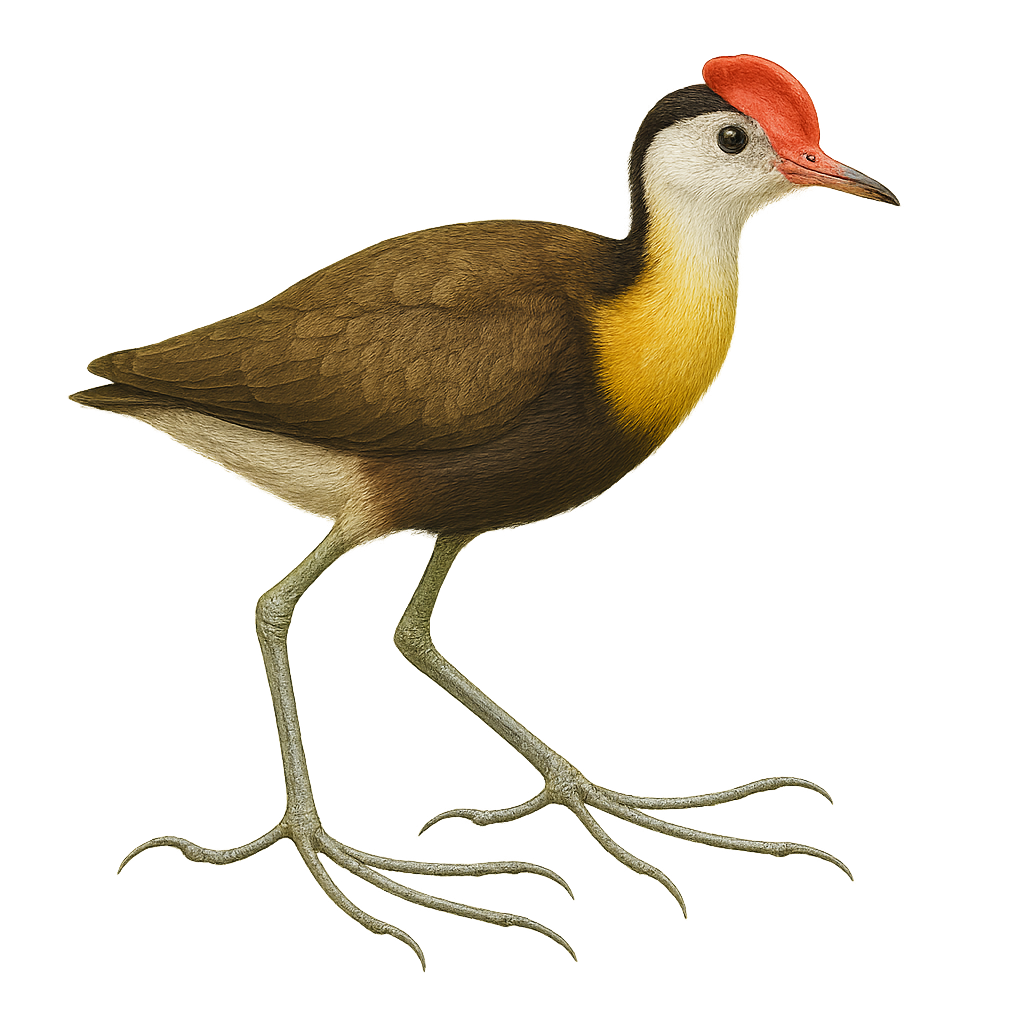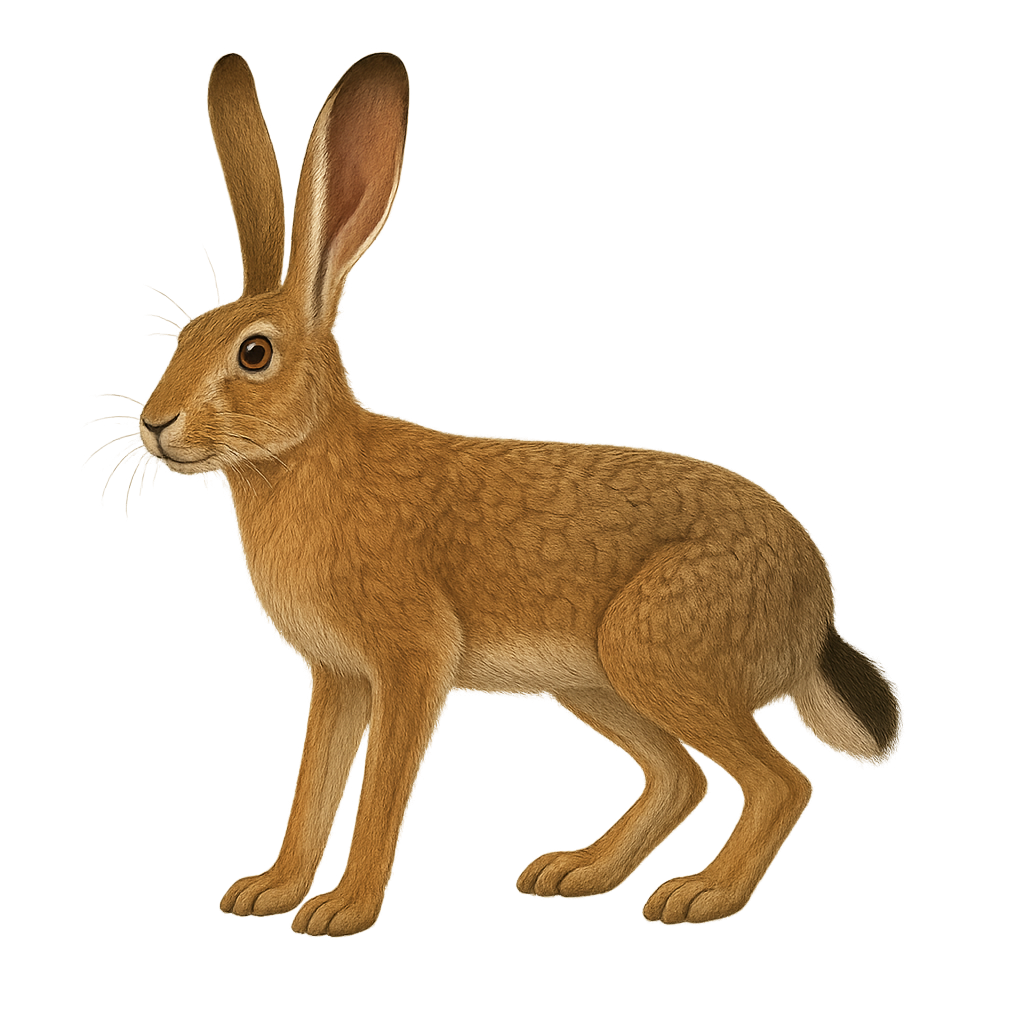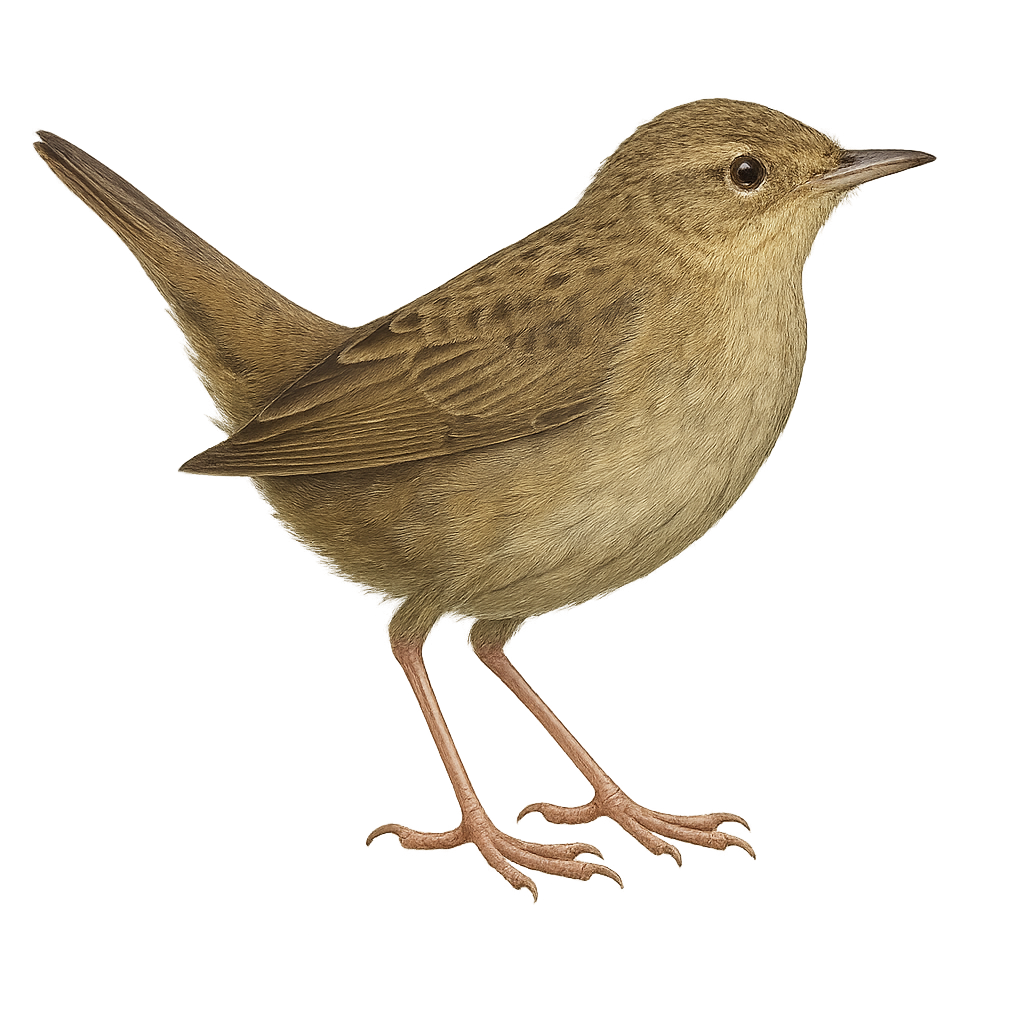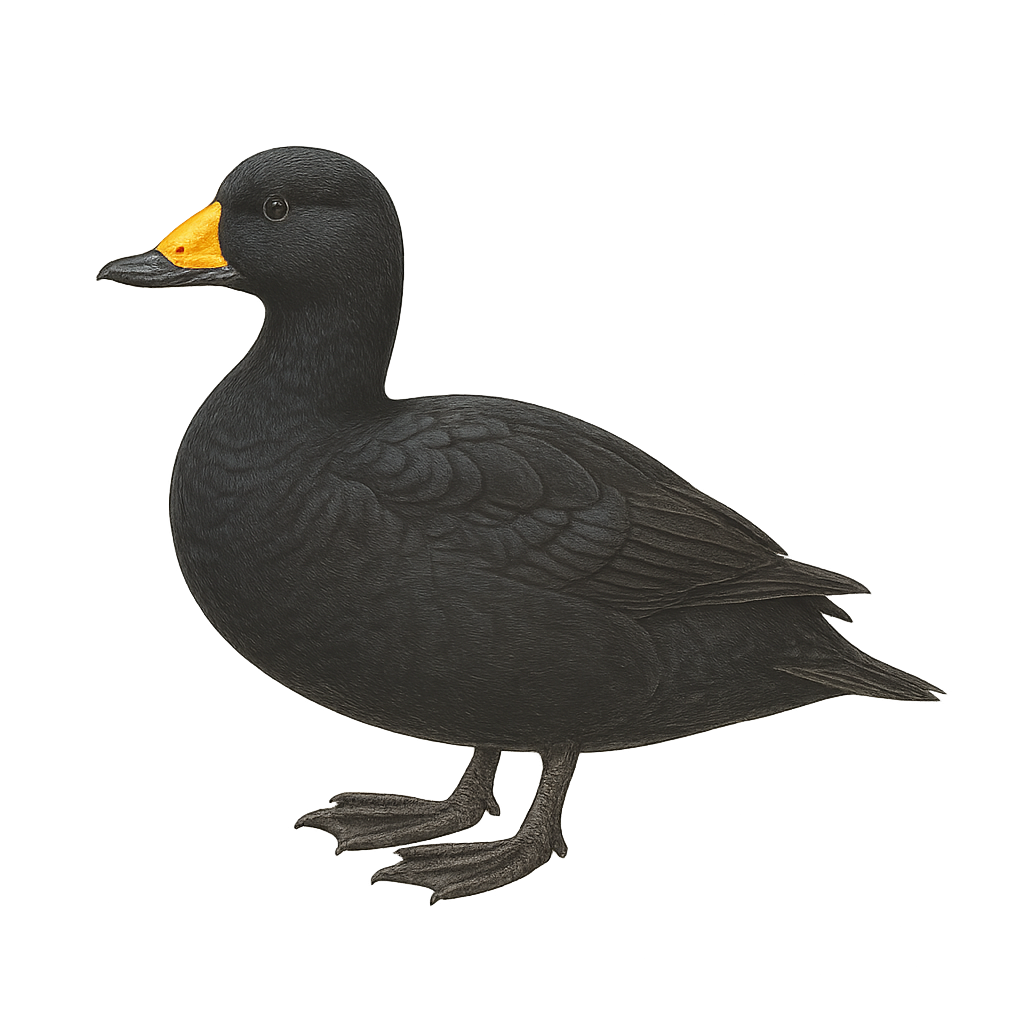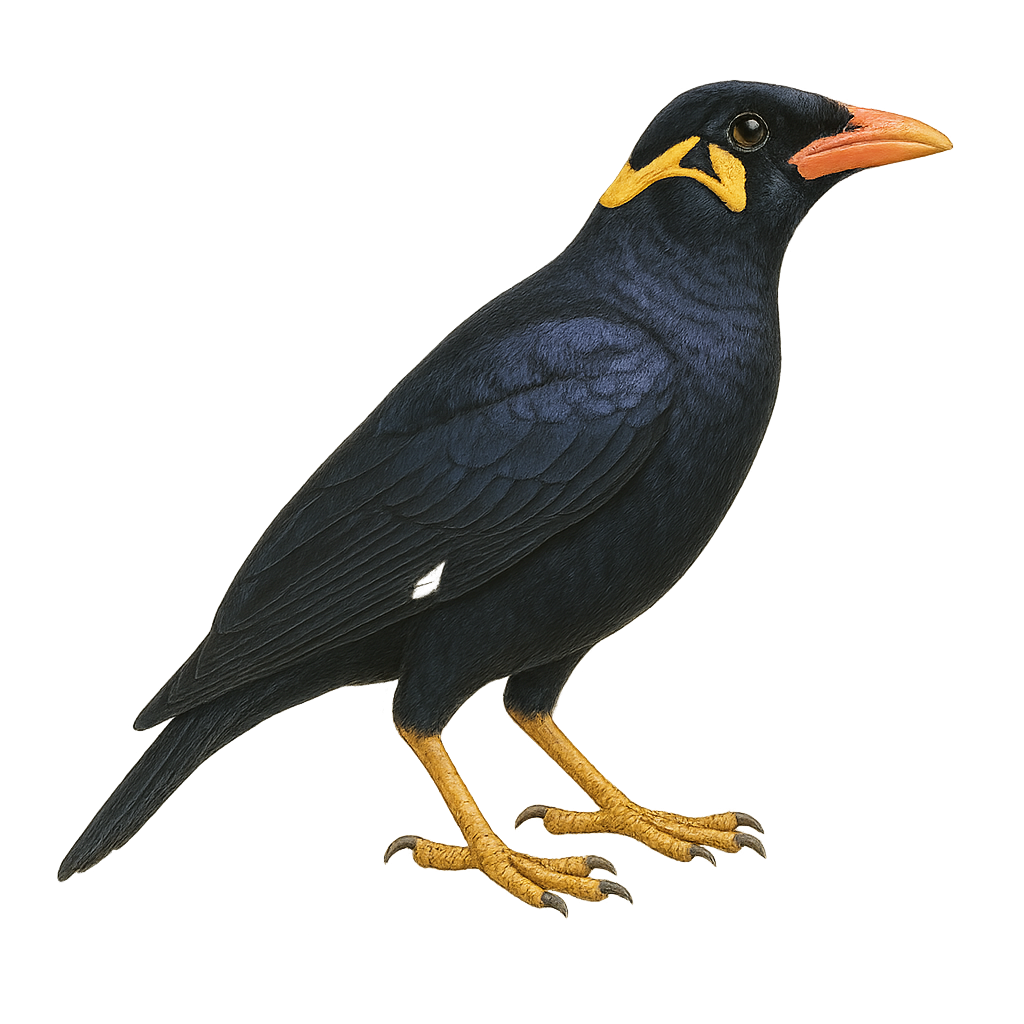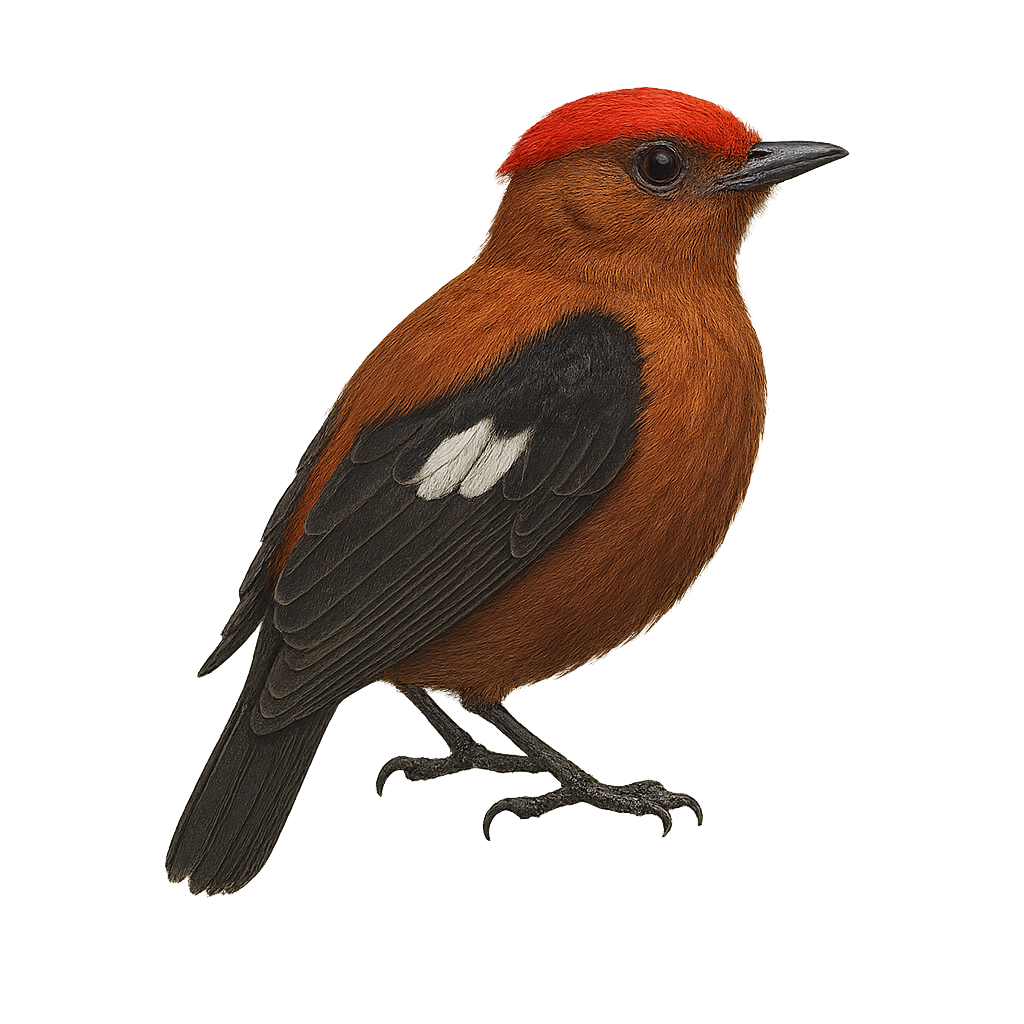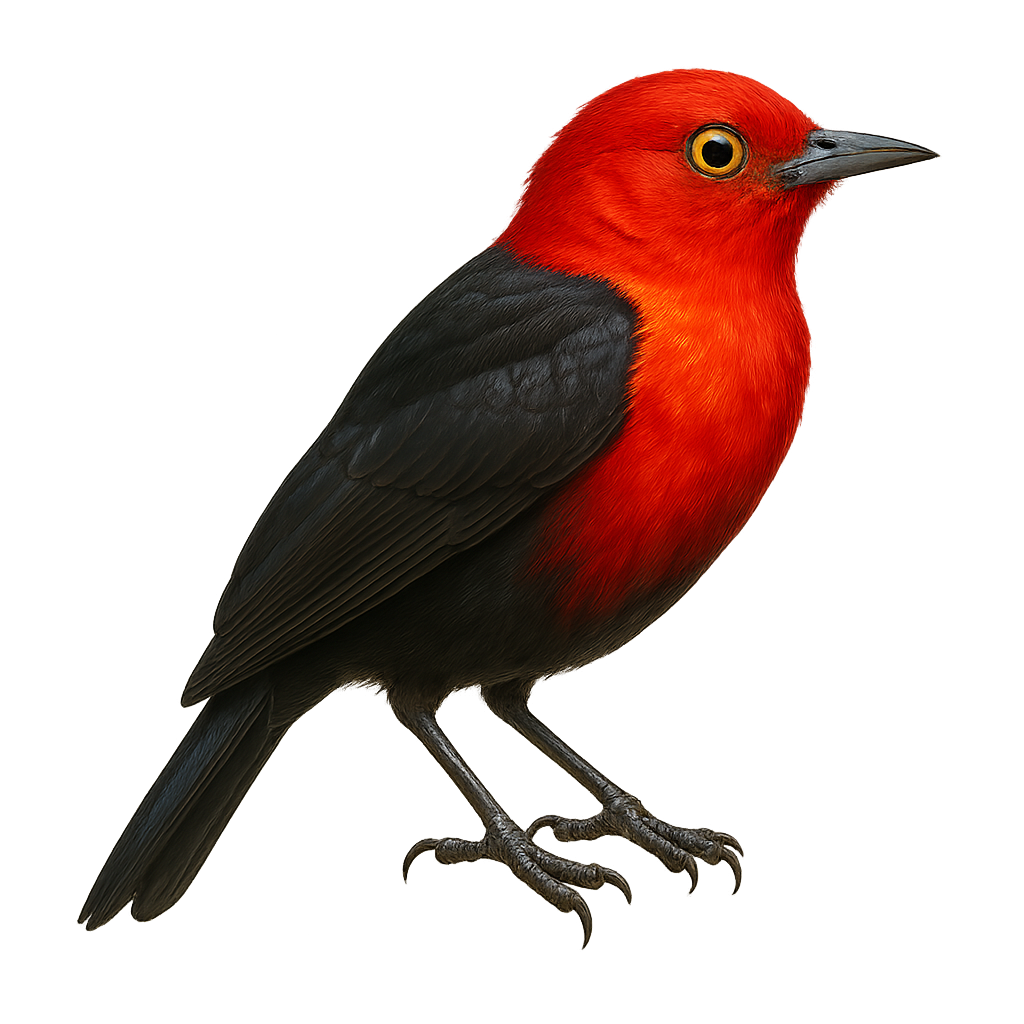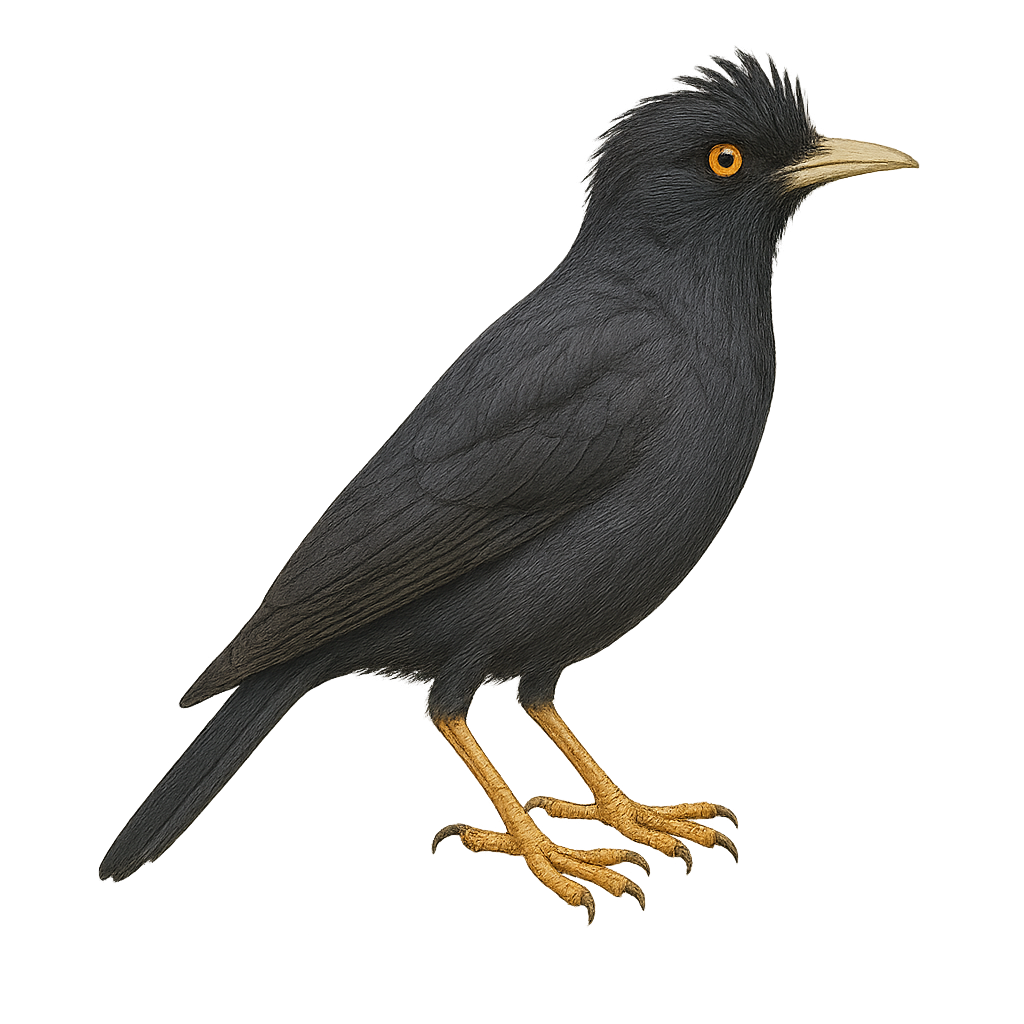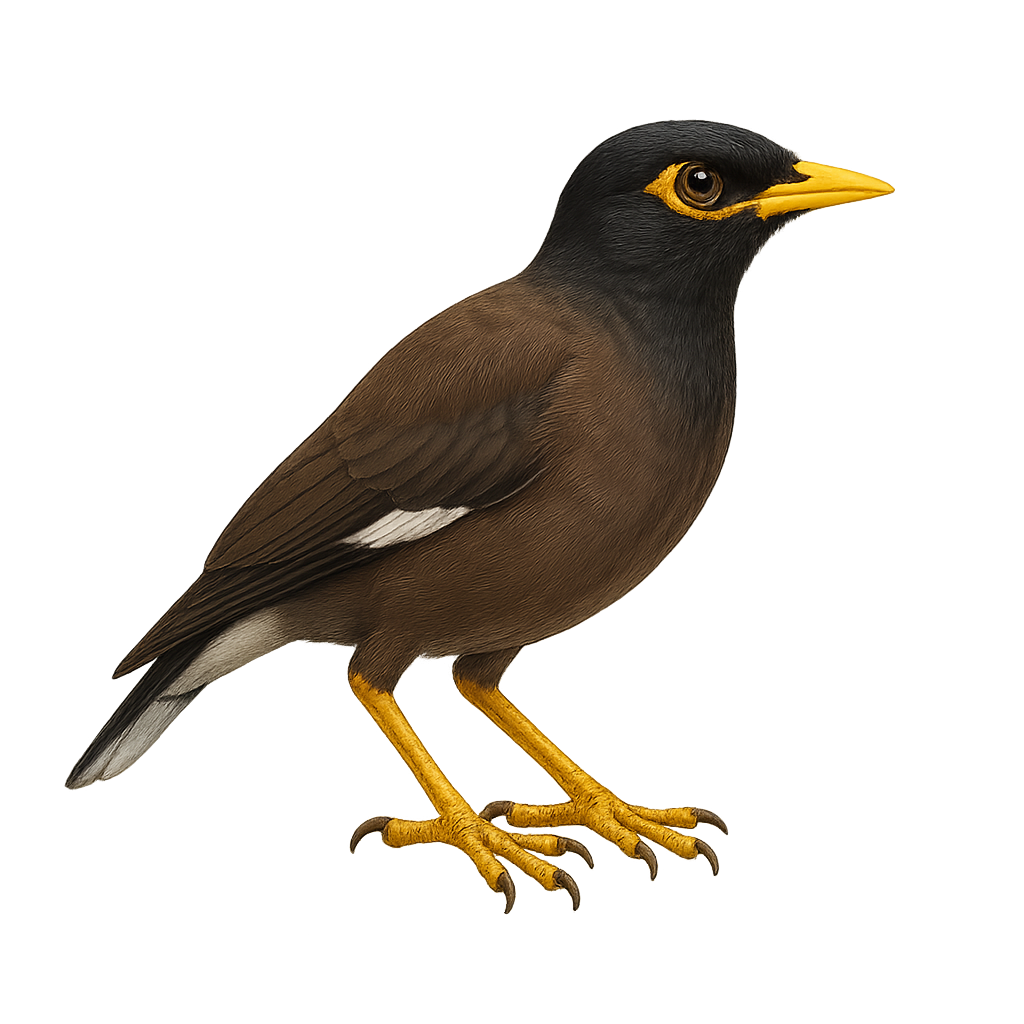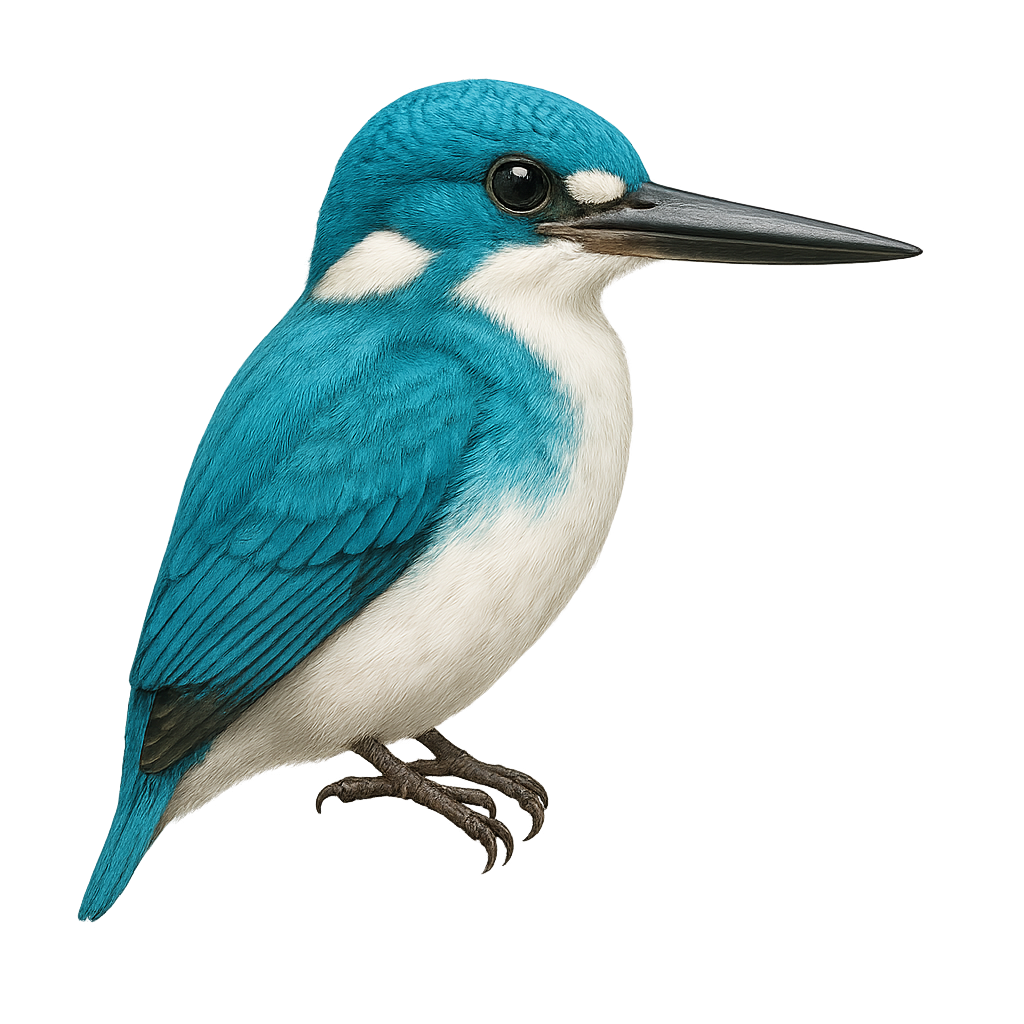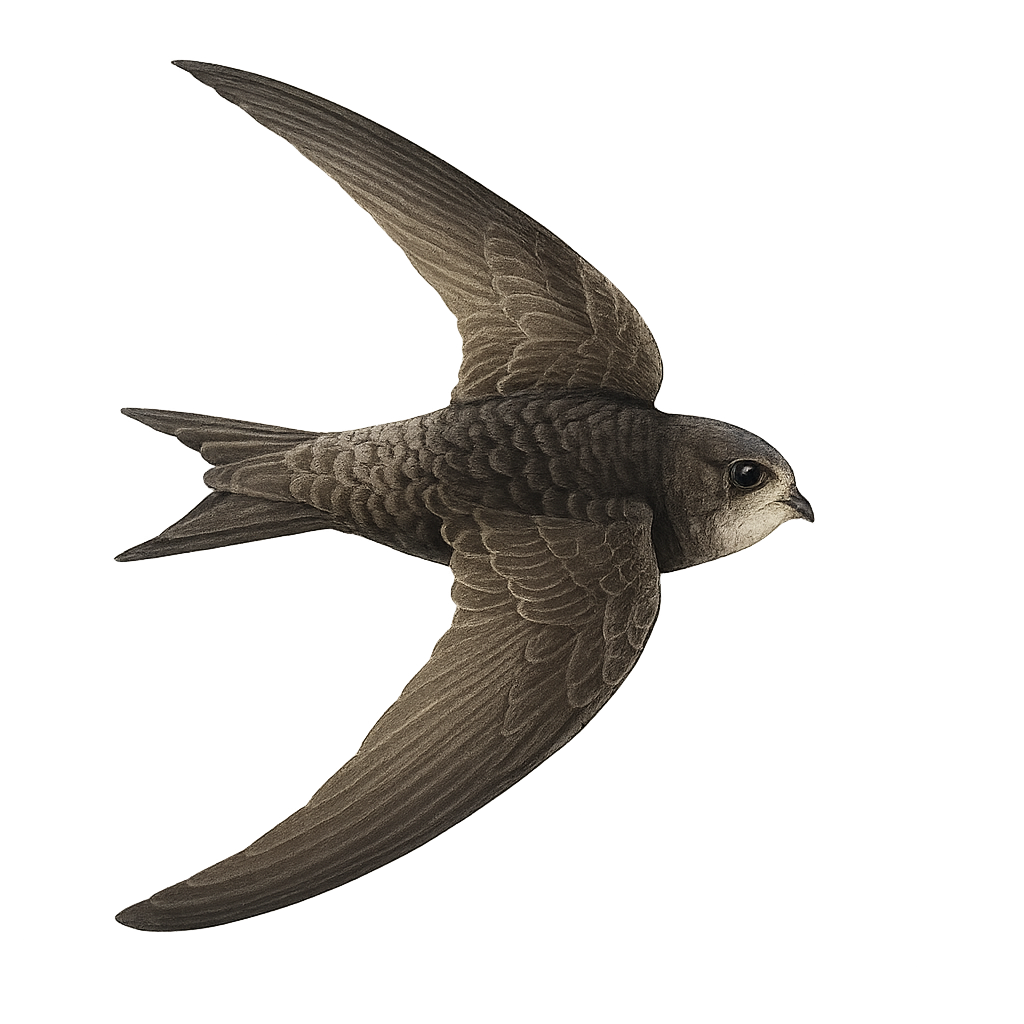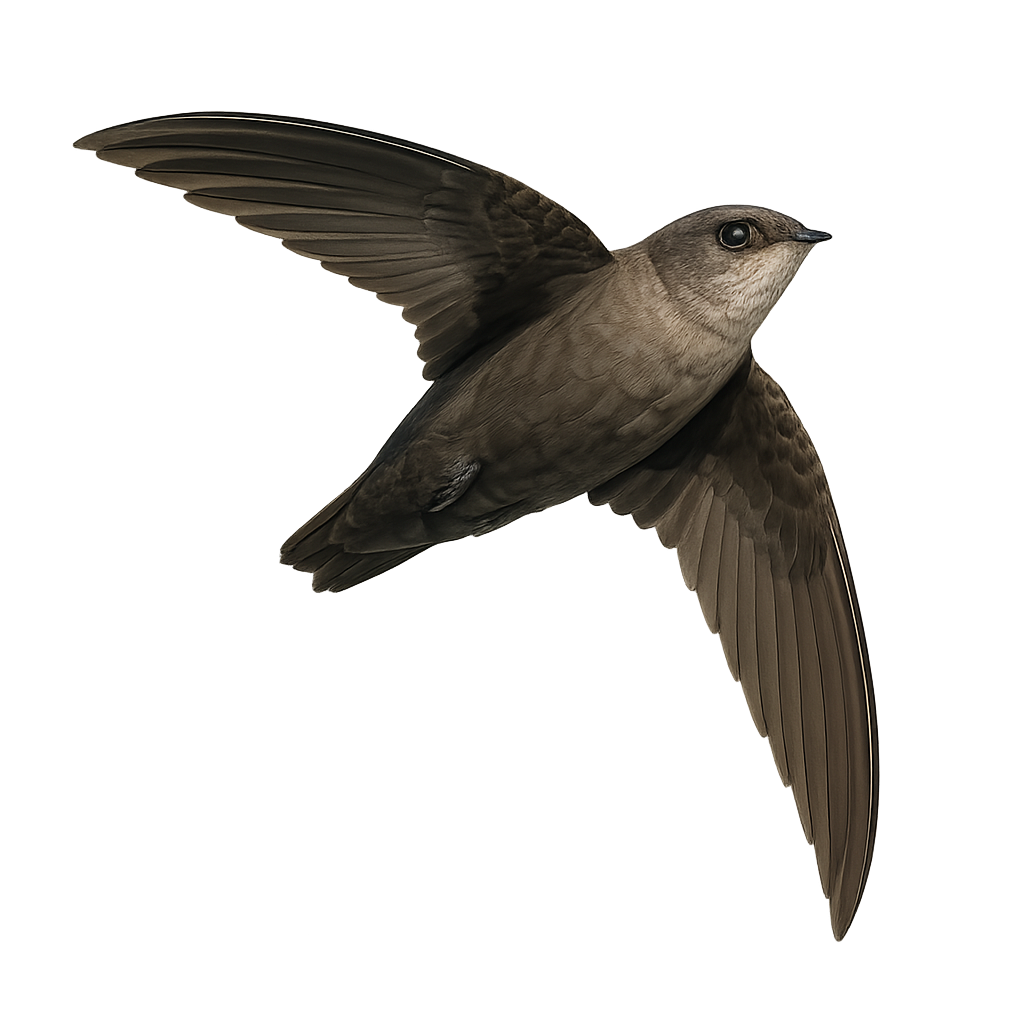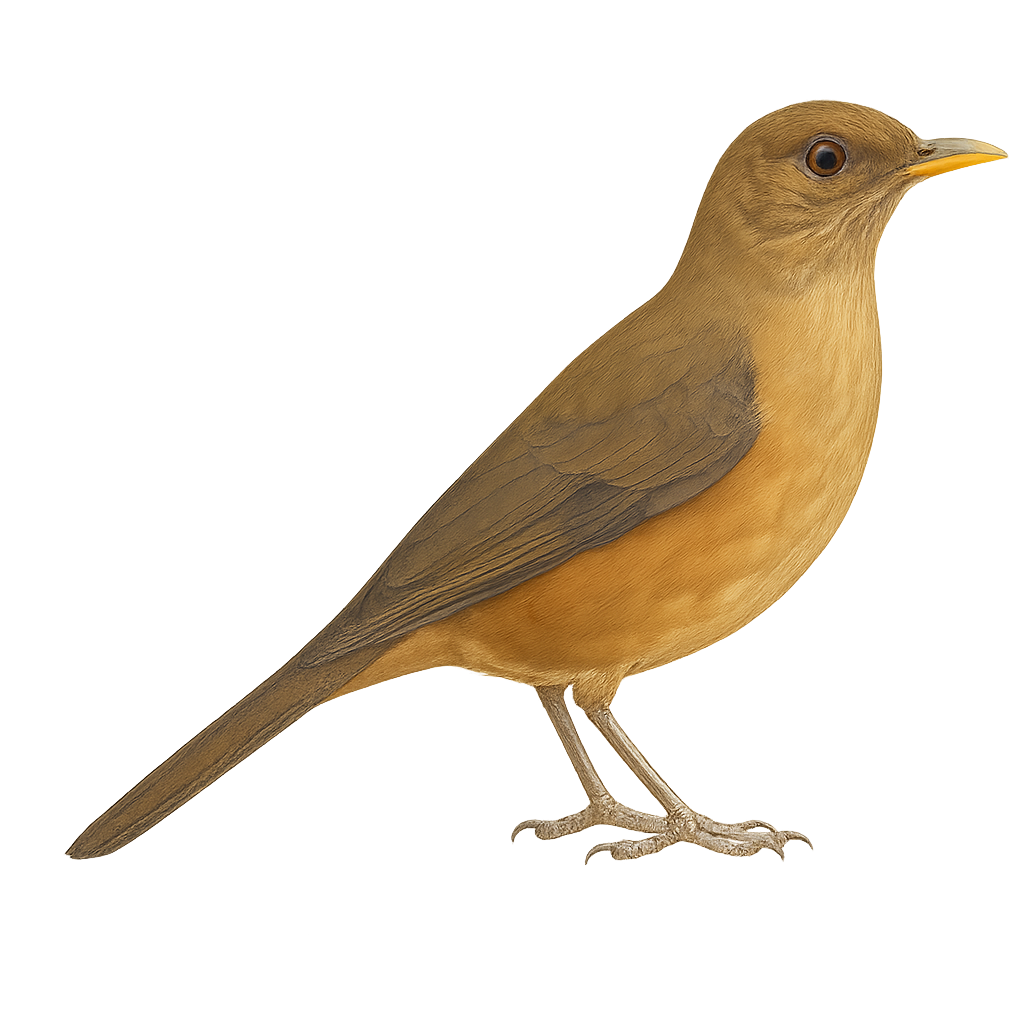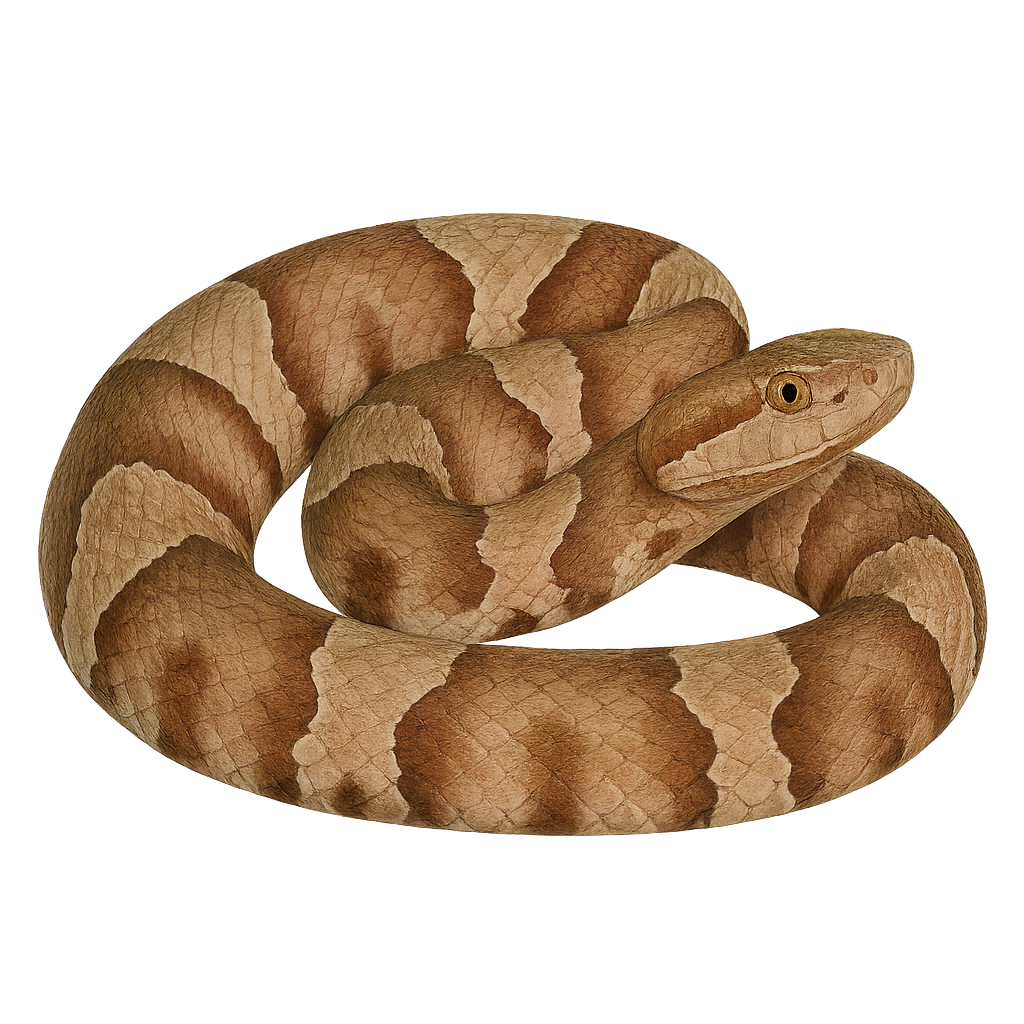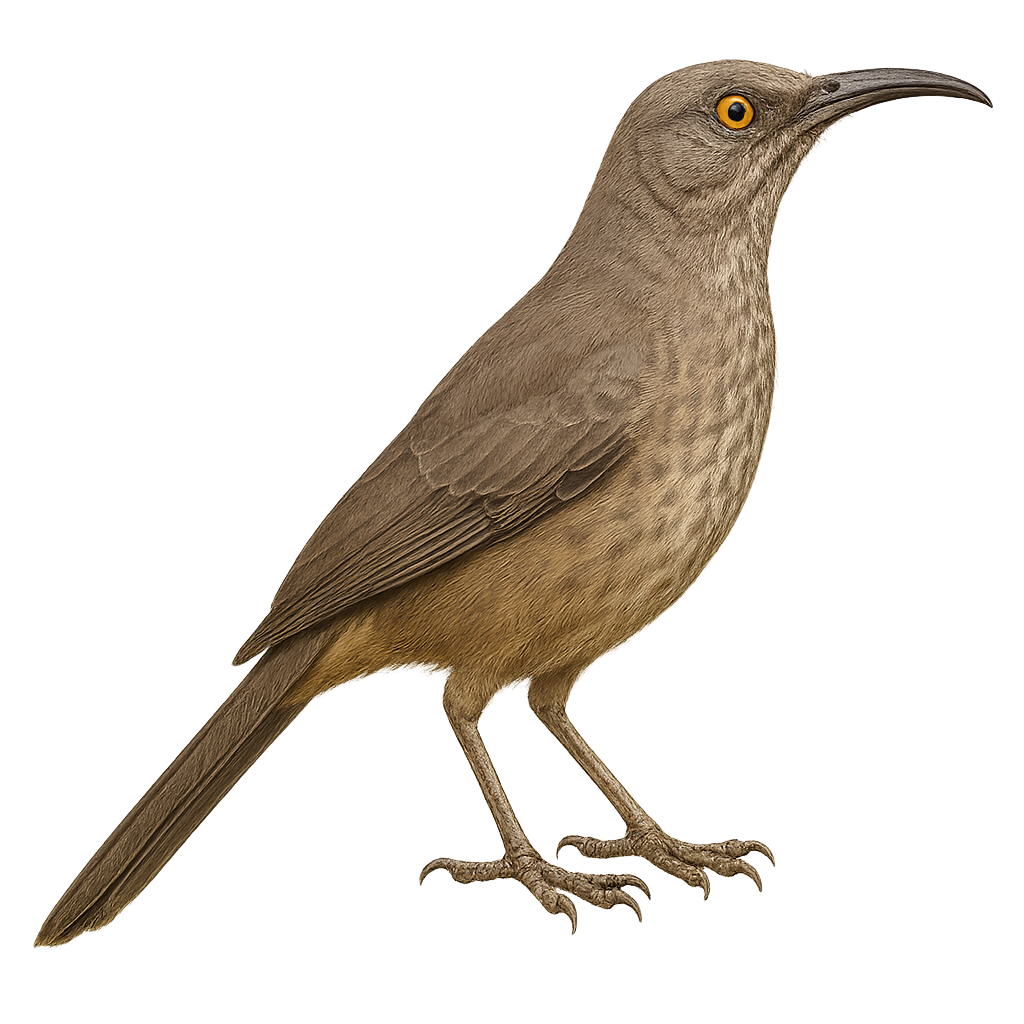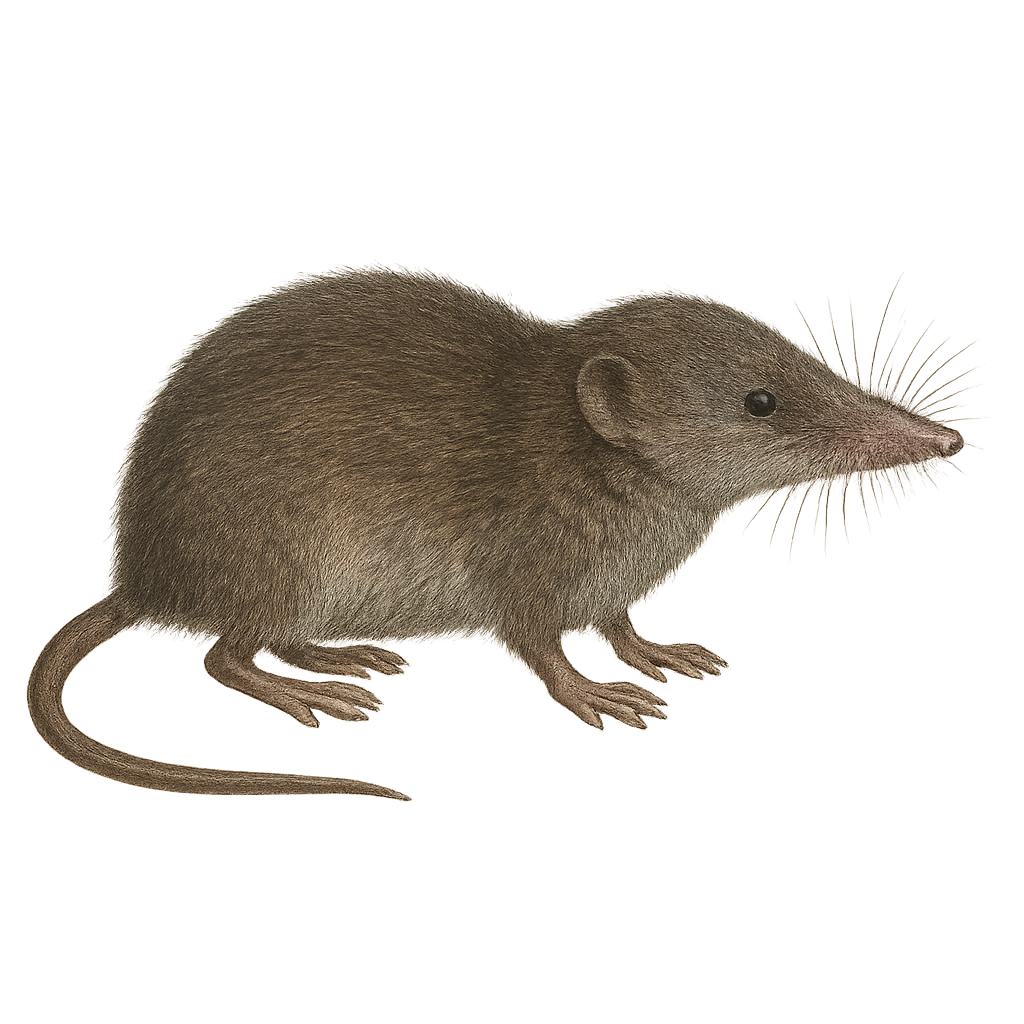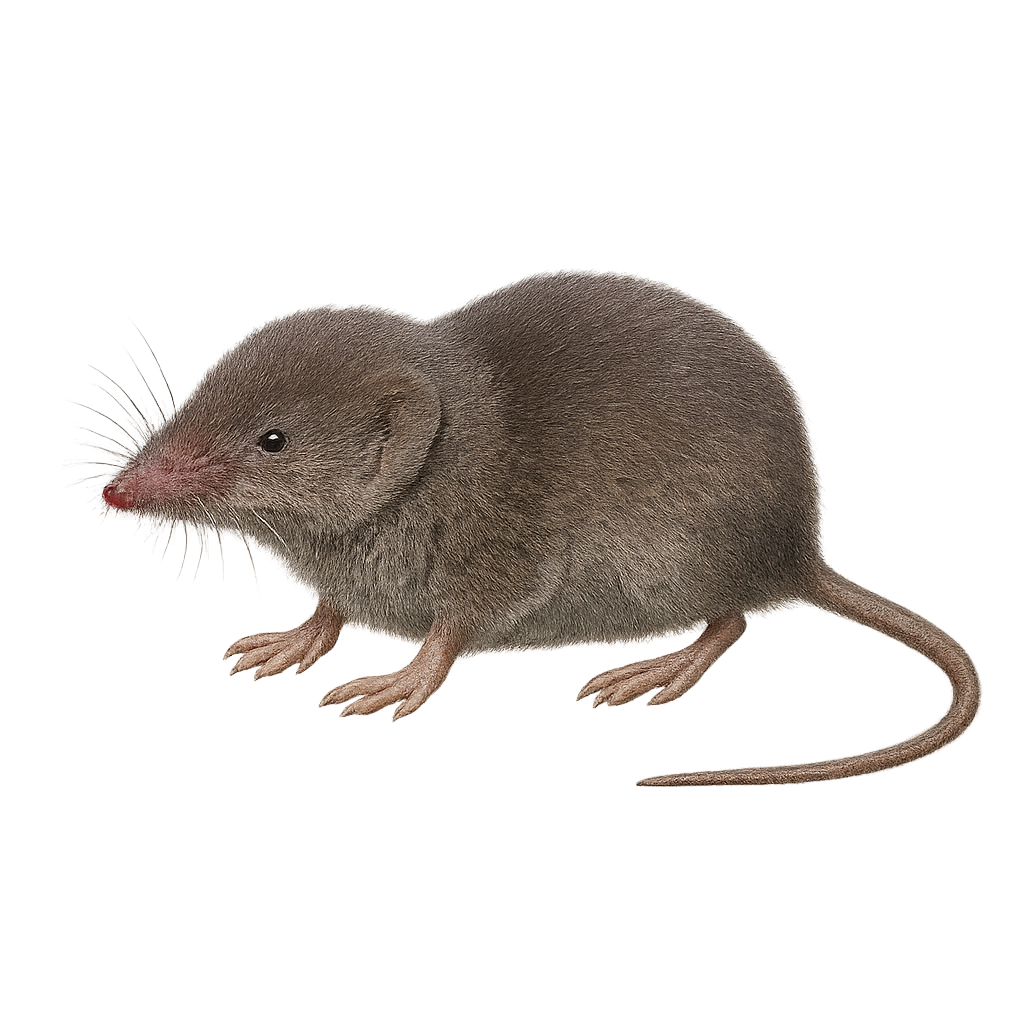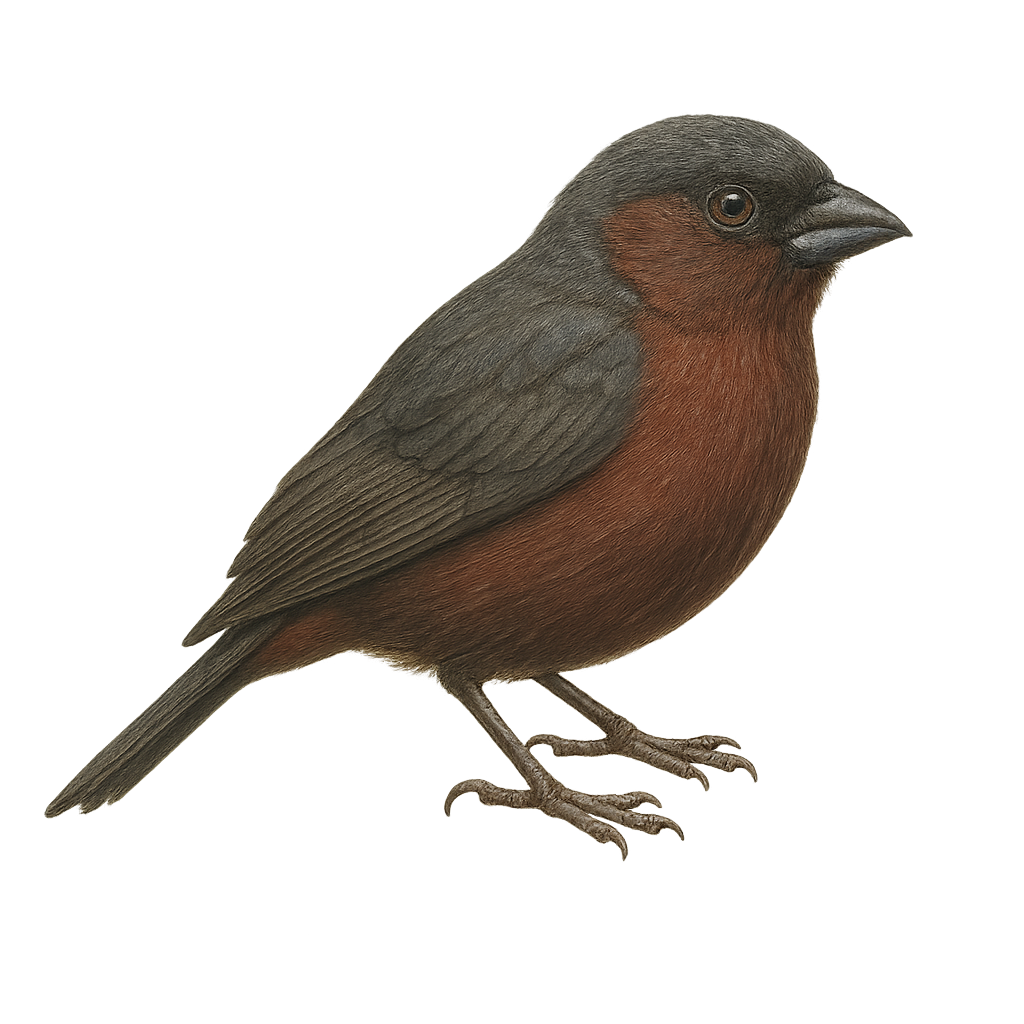The Common Hippopotamus is a large semi-aquatic mammal, easily recognizable by its massive body and thick skin. It measures between 3.3 and 4.5 meters in length, with a weight reaching 1,500 to 1,800 kg, or more. Its body is primarily gray, with pink skin underneath the belly and ears and eyes positioned high on its head, allowing it to see and hear while submerged in water. Hippos are primarily herbivores, feeding on grass and aquatic vegetation in large quantities, mostly at night. They spend most of their time in the water to regulate their body temperature and prevent dehydration, while still being able to move quickly on land. The Common Hippopotamus primarily inhabits sub-Saharan Africa, in rivers, lakes, and swamps. Although it is a powerful and territorial animal, it is threatened by habitat loss, hunting, and conflicts with human populations.
The Chilean Swallow, Tachycineta leucopyga, is an elegant and agile bird, easily recognizable by its metallic blue back and white belly. It is often seen in flight, catching insects in mid-air. This species is widespread in South America, particularly in open areas near water, such as marshes and rivers. It nests in natural or artificial cavities, and its breeding season coincides with the austral spring. Although generally not very shy, it can become suspicious if it feels threatened. Its ability to adapt to different habitats makes it a resilient species, although habitat degradation could pose a long-term threat.
The Chatham Island Oystercatcher is an endemic bird of the Chatham Islands, New Zealand. It is characterized by its striking black and white plumage, bright red bill, and long pink legs. This coastal bird is often seen on sandy beaches and rocky areas where it primarily feeds on mollusks and crustaceans. It is known for its territorial behavior, especially during the breeding season. With an estimated population of about 250 individuals, it is considered an endangered species. Conservation efforts include habitat protection and management of introduced predators.
The Crested Ibis, scientifically known as Nipponia nippon, is an elegant and rare bird once widespread in East Asia. It is easily recognizable by its striking white plumage, long red legs, and curved black beak. Its head features a bare reddish skin, and a distinctive crest adorns its nape. This majestic bird primarily inhabits wetlands, rice paddies, and marshes, where it feeds on small fish, insects, and crustaceans. Unfortunately, the Crested Ibis has experienced a dramatic population decline due to habitat loss and hunting, but conservation efforts have helped stabilize some populations.
The Chestnut-headed Woodhoopoe is a fascinating bird, recognizable by its chestnut-colored head and iridescent plumage. It belongs to the Phoeniculidae family and is primarily found in the tropical forests of Central and East Africa. This bird measures about 30 to 35 cm in length, with a long, curved beak ideal for extracting insects and larvae from tree bark. Its social behavior is remarkable, often living in family groups that communicate through distinctive calls. The Chestnut-headed Woodhoopoe is a diurnal bird, active mainly in the morning and late afternoon. Although relatively tolerant of human presence, it prefers dense wooded areas where it can easily hide.
The Comb-crested Jacana, known for its long legs and slender toes, is a fascinating aquatic bird primarily inhabiting the wetlands of Australia and New Guinea. It is easily recognizable by its bright red comb and golden-brown plumage. This bird is an excellent swimmer and walker on water lilies, thanks to its long, thin toes that distribute its weight. The Comb-crested Jacana is polyandrous, meaning the female mates with several males, leaving them responsible for incubating the eggs and caring for the young. It primarily feeds on insects and other small invertebrates found on the water's surface.
The Cedar Waxwing is an elegant and sociable bird, easily recognizable by its sleek, silky plumage of grayish-brown with bright yellow accents on the tail. It also sports a distinctive crest and a black mask around the eyes. This passerine is often seen in flocks, feeding primarily on berries and fruits, making it a key player in seed dispersal. It is mainly found in open forests, orchards, and urban areas with fruit-bearing trees. Its ability to move in large flocks allows it to cover vast distances in search of food. The Cedar Waxwing is also known for its elaborate courtship displays, where partners exchange berries.
The Cape Hare is a large herbivorous mammal native to sub-Saharan Africa, particularly found in open areas, savannas, and semi-arid regions. It measures between 50 and 70 cm in length, with a tail of 10 to 12 cm, and weighs between 2 and 4 kg. Its coat is generally light brown or gray with a lighter belly, allowing it to blend effectively into its environment. The Cape Hare is a nocturnal and crepuscular animal, primarily feeding on plants, grasses, fruits, and roots. While it is a fast runner, reaching speeds of 50 to 60 km/h, it prefers discretion and often remains hidden during the day in bushes or tall grasses. This hare is also known for its ability to remain motionless and quickly adapt to its surroundings, making it difficult for predators to spot. While the species is relatively common, it can be threatened by habitat loss and hunting.
The common grasshopper warbler is a small passerine about 13 cm long with streaked brown upperparts and long undertail coverts. Secretive in dense grassy vegetation and low scrub at water margins, it feeds on insects gleaned from foliage. During breeding, the male sings from a low branch or elevated grass stem to defend its territory and court the female.
The Canada Lynx is a medium-sized cat characterized by its thick paws and large pointed ears adorned with black tufts of fur. It measures about 80 to 105 cm in length, with a short tail of about 10 to 15 cm, and weighs between 8 and 14 kg. Its coat is generally light gray to reddish-brown, with darker spots on the flanks and a lighter underside. The Canada Lynx primarily inhabits the boreal forests of North America, particularly in Canada and northern parts of the United States. It primarily feeds on hares, particularly the Snowshoe Hare, but may also hunt small mammals, birds, and fish. This solitary predator is known for its great stealth and ability to blend into its snowy environment. While the species remains relatively stable, it faces threats such as habitat loss, competition with other predators, and the impacts of climate change.
The crab-eating macaque is a semi-terrestrial primate 40–60 cm long (excluding tail) with a long tail and grey-brown fur. It inhabits mangroves, primary and secondary forests, agricultural and urban areas of Southeast Asia, feeding on crabs, fruits, seeds and small invertebrates. Breeding occurs year-round, with groups led by a dominant male and each female giving birth to a single offspring.
The common scoter is a medium-sized diving duck, easily identified by the male's uniform black plumage and the female's dark brown feathers. It primarily inhabits coastal areas and large freshwater bodies. During the breeding season, it is found in northern regions, particularly in Scandinavia and Russia. Its diet mainly consists of mollusks, crustaceans, and small fish, which it catches by diving. The common scoter is a migratory bird, wintering in the milder waters of Western Europe. It is often seen in large flocks, forming rafts on the water.
The Common Hill Myna, Gracula religiosa, is a remarkable bird known for its ability to mimic sounds and human speech. Native to the tropical forests of Southeast Asia, it is easily recognizable by its glossy black plumage, white wing patches, and bright yellow wattles behind the eyes. This sociable bird lives in groups and primarily feeds on fruits, nectar, and insects. It is often seen in humid forests, mangroves, and plantations. Although popular as a pet due to its vocal talents, preserving its natural habitat is crucial for its long-term survival.
The Club-winged Manakin, scientifically known as Machaeropterus deliciosus, is a small bird native to the humid tropical forests of South America. The male is particularly notable for its vibrant plumage and unique courtship display, where it produces a violin-like sound by rapidly rubbing its modified wing feathers together. This fascinating behavior is rare among birds. They inhabit dense undergrowth, feeding primarily on fruits and insects. Although their habitat is threatened by deforestation, they remain relatively common in protected areas. Socially, these birds are intriguing, with males often solitary except during the breeding season.
The Crimson-hooded Manakin is a small, colorful bird found in the tropical forests of South America. Males are particularly striking with their bright golden heads contrasting against their black bodies, while females have more subdued olive-green plumage. These birds are famous for their elaborate courtship displays, where males perform complex dances to attract females. They primarily inhabit dense undergrowth and feed on fruits and insects. Their range extends from Venezuela to Brazil, including Guyana. Although relatively common, their reliance on primary forests makes them vulnerable to deforestation.
The Common Porpoise is a small cetacean from the Phocoenidae family, found primarily in the temperate and cold waters of the North Atlantic and the North Sea, although its range also extends to certain parts of the Baltic Sea. It typically measures between 1.3 and 2 meters in length and weighs between 40 and 65 kg. Its coat is dark on the back and light on the belly, and it has a small dorsal fin located near the back. The Common Porpoise has a rounded snout and is easily recognizable by its small, rounded pectoral fins. It primarily feeds on fish, crustaceans, and cephalopods, hunting using echolocation to locate prey in the water. Although it is often seen in small groups, it generally prefers to swim alone or in small family units. While the species is classified as of least concern, it faces threats such as pollution, accidental bycatch in fishing nets, and disturbances caused by maritime traffic.
The Crested Myna, or Acridotheres cristatellus, is a medium-sized bird, about 25 cm long. It is characterized by its glossy black plumage, striking yellow eyes, and a distinctive crest on its head. Native to Asia, it is often found in urban and rural areas, easily adapting to human-altered environments. An omnivore, it feeds on insects, fruits, and seeds. Its song is varied, including whistles and imitations of other birds. The Crested Myna is a social bird, often seen in small groups. Although primarily sedentary, it may make short movements to find food.
The Common Myna, or Acridotheres tristis, is a medium-sized bird easily recognized by its brown body, black head, and white wing patches. Native to South Asia, it has spread to many parts of the world, sometimes becoming invasive. This bird is highly adaptable, thriving in both urban and rural environments. It is omnivorous, feeding on fruits, insects, and food scraps. The Common Myna is known for its intelligence and ability to mimic sounds, including human speech. It forms monogamous pairs and is often seen in noisy groups.
The Cerulean Kingfisher, Alcedo coerulescens, is a small bird, approximately 16 cm in length. It is known for its striking plumage: a vivid blue back, orange belly, and a head adorned with blue and black bands. This kingfisher is primarily found in Indonesia, inhabiting tropical rainforests and mangroves. It feeds mainly on small fish and aquatic insects, which it catches with precise dives. Although discreet, its high-pitched, repetitive call can be heard near water bodies. Due to deforestation, its habitat is threatened, impacting its populations.
The Common Swift, Apus apus, is a migratory bird known for spending most of its life in flight. With a wingspan of 40 to 44 cm, it is easily recognizable by its crescent-shaped silhouette and dark plumage. Common Swifts are masters of the sky, capable of traveling thousands of kilometers without landing. They feed on insects caught in flight. Their high-pitched call is often heard before they are seen. These birds nest in crevices of buildings or cliffs, and their annual return is a herald of summer.
The Chimney Swift, Chaetura pelagica, is a small migratory bird known for its rapid and agile flight. It is often seen in urban areas, nesting in chimneys and similar structures. Its plumage is primarily dark brown, making it difficult to spot when flying high in the sky. These birds are insectivores, feeding mainly on small flying insects caught in mid-air. Their high-pitched call is often heard before they are seen. Chimney Swifts are social birds, frequently observed in large groups, especially during migration. They play a crucial role in controlling insect populations, thus contributing to ecological balance.
The Clay-colored Thrush, or Turdus grayi, is a medium-sized bird, measuring about 23 to 27 cm in length. Its plumage is primarily light brown, allowing it to blend into its natural surroundings. Known for its melodious song, it is often heard at dawn and dusk. This bird is widely distributed in Central America, from southern Mexico to northern Colombia. It prefers open habitats such as gardens, parks, and secondary forests. The Clay-colored Thrush is an omnivorous bird, feeding on fruits, insects, and small invertebrates. It is often seen foraging on the ground in search of food.
The coal tit is a small passerine, 10–12 cm long, with slate-grey plumage, a black cap, white bib, and subtly streaked flanks. It frequents coniferous and mixed woodlands across Europe, often at edges or low in the canopy, where it forages on branches and trunks for insects and spiders. Solitary or in small family groups, it may join communal roosts in winter. During the breeding season, pairs defend their nest site together, placing the nest in a tree cavity or an old tit nest.
The Agkistrodon contortrix, commonly known as the Copperhead, is a venomous snake native to the United States. It is identifiable by its coppery brown coloration with darker crossbands. This snake prefers wooded habitats, rocky areas, and grasslands. Although venomous, its bite is rarely fatal to humans but can cause intense pain and requires medical attention. The Copperhead is a relatively discreet snake that prefers to avoid confrontations. It primarily feeds on small rodents, birds, and insects. Its ability to remain still and camouflaged in its environment makes it difficult to spot.
The Curve-billed Thrasher is a bird with gray-brown plumage and lighter spots on its belly. Its long, curved bill is distinctive, allowing it to probe the ground for food. Primarily insectivorous, it also eats fruits and seeds. Found in the arid and semi-arid regions of the southwestern United States and Mexico, it frequents thorny bushes and desert areas. Known for its varied and melodious song, it uses this to defend its territory and attract a mate. The Curve-billed Thrasher is a resilient bird, capable of adapting to harsh environments.
The Corsican Mouflon is a subspecies of the Mouflon, native to the island of Corsica, where it primarily inhabits mountains and rocky areas. It measures about 70 cm in height at the withers and weighs between 40 and 70 kg. What distinguishes the Corsican Mouflon are its horns, which are particularly large and spirally curved in males, while females have smaller horns. Its coat is generally reddish-brown with lighter shades on the belly and a darker mane along the back. The Corsican Mouflon is an agile animal and an excellent climber, capable of moving easily through the steep and rocky terrain of its natural habitat. It feeds primarily on grasses, shrubs, leaves, and roots. While its population remains relatively stable on the island, it faces threats related to habitat loss and hunting. These animals are solitary or live in small groups, primarily during the breeding season.
The common shrew, or Sorex araneus, is a small insectivorous mammal found primarily in Europe. It measures about 5 to 8 cm in length, excluding its tail, which adds an additional 3 to 5 cm. Its fur is typically dark brown on the back and lighter on the belly, allowing it to blend into its natural surroundings. It has a pointed snout and characteristic red-tipped teeth. The common shrew is a very active animal, spending most of its time foraging for food, mainly insects, spiders, and worms. It has a very fast metabolism, meaning it needs to eat frequently to survive.
The crowned shrew, Sorex coronatus, is a small insectivorous mammal found mainly in Central Europe. It measures about 5 to 8 cm in length, with a tail of about 4 to 5 cm. Its fur is brown on the back and lighter on the belly. It is distinguished by its elongated head and pointed snout, typical of shrews. It inhabits various environments, including forests, meadows, and wetlands. It primarily feeds on insects, larvae, and small invertebrates. Although active year-round, it is particularly active at night. The crowned shrew plays an important role in the ecosystem by regulating insect populations.
The Crimson Myzomela, scientifically known as Myzomela rubratra, is a small, vibrant bird with predominantly red plumage and black accents on its wings and tail. It is native to several Pacific islands, including New Caledonia and the Solomon Islands. This nectarivore primarily feeds on flower nectar, but also consumes insects and fruits. Its slender, curved beak is perfectly adapted for nectar extraction. The Crimson Myzomela is often found in tropical rainforests, mangroves, and gardens. Known for its melodious song and active nature, it is frequently seen flitting from flower to flower. Although its habitat is threatened by deforestation, it is currently listed as of least concern by the IUCN.
The Chestnut-breasted Nigrita is a small African bird belonging to the Estrildidae family. It is characterized by its chestnut-brown breast and black body, giving it an elegant and distinctive appearance. This bird is primarily found in the tropical rainforests and wooded savannas of Central and West Africa. Often seen in small groups, it feeds on seeds and insects. The Chestnut-breasted Nigrita is known for its melodious song and complex social behaviors. Although its habitat is threatened by deforestation, it is currently listed as a species of least concern by the IUCN.


